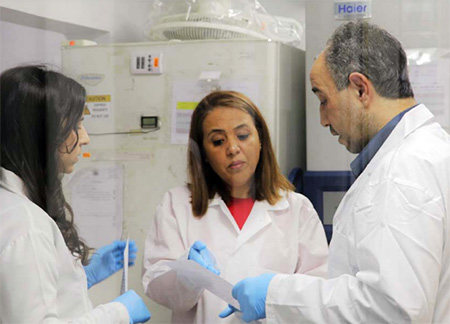 Influenza surveillance is the collection, compilation and analysis of information on influenza activity in a defined population. This could be a country, specific population groups or a region. Data are collected over a defined period of time and reported for the purposes of monitoring influenza activity to facilitate the undertaking early actions to stop or minimize its transmission. The purpose of systematic surveillance of influenza activity is to:
Influenza surveillance is the collection, compilation and analysis of information on influenza activity in a defined population. This could be a country, specific population groups or a region. Data are collected over a defined period of time and reported for the purposes of monitoring influenza activity to facilitate the undertaking early actions to stop or minimize its transmission. The purpose of systematic surveillance of influenza activity is to:
better understand when and where influenza activity is occurring;
determine which influenza viruses are circulating;
detect changes (mutations) in influenza virus; and
measure the impact influenza is having on illness, hospitalizations and deaths.
Methods for influenza surveillance
Influenza surveillance is conducted through passive, active and sentinel surveillance methods. Passive surveillance is the routine collection of data from fixed sites, such as outpatient wards and hospitals. Active surveillance is the collection of reported cases that are reported to health authorities. These reports can come from hospitals and the community. Sentinel surveillance is a network of purpose-built reporting sites, where more detailed information and samples are collected from people that fit the surveillance criteria. Sentinel surveillance can supplement existing passive systems with more detailed information, without overburdening existing national disease surveillance systems.
Influenza case definitions
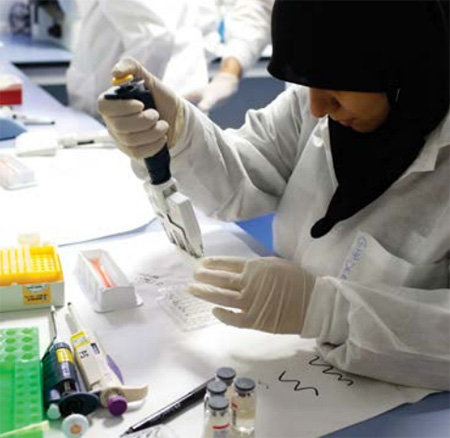 For the purposes of influenza surveillance globally, WHO uses the following case definitions for the 2 conditions that constitute influenza case definition: influenza-like illness (ILI) and severe acute respiratory infections (SARI).
For the purposes of influenza surveillance globally, WHO uses the following case definitions for the 2 conditions that constitute influenza case definition: influenza-like illness (ILI) and severe acute respiratory infections (SARI).
ILI case definition
An acute respiratory infection with:
measured fever of 38 ⁰C or more
and cough
with onset within the last 10 days.
SARI case definition
An acute respiratory infection with:
history of fever or measured fever of 38 ⁰C or more
and cough
with onset within the last 10 days
requires hospitalization
Why influenza surveillance is important
Influenza viruses are constantly changing, therefore ongoing data collection and characterization of viruses is required.
Influenza viruses can undergo an abrupt, major change that results in a virus that is very different to those currently circulating. Surveillance of viruses will detect these changes and inform the public health response, such as virus-specific vaccine development.
Vaccines must be administered annually and are updated regularly based on surveillance findings.
Treatment for influenza infection is guided by laboratory surveillance for antiviral resistance.
Influenza surveillance and targeted research studies are used to monitor the impact of influenza on different groups in a population (e.g. certain age groups, people with underlying health conditions, etc.).
Influenza surveillance data help estimate influenza burden of disease study (of severe diseases, hospitalization and deaths), which in turn contribute to vaccine effectiveness studies and the development of new vaccines.
WHO support to countries for influenza surveillance
The WHO’s Global Influenza Programme (GIP) provides global standards for influenza surveillance. In addition, GIP collects and analyses virological and epidemiological influenza surveillance data from around the world. The regular sharing of quality influenza surveillance and monitoring data by countries allows WHO to:
provide countries, areas and territories with information about influenza transmission to allow national policy-makers to better prepare for upcoming seasons;
describe critical features of influenza epidemiology, including risk groups, transmission characteristics, and impact;
monitor global trends in influenza transmission; and
support the selection of influenza strains for vaccine production.
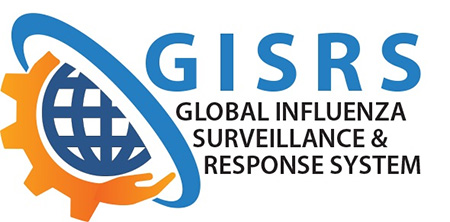 Due to the constant evolving nature of influenza viruses, the WHO Global Influenza Surveillance and Response System (GISRS) – a system of national influenza centres and WHO collaborating centres around the world – continuously monitors the influenza viruses circulating in humans and updates the composition of influenza vaccines twice a year. Since 1952, GISRS has been fostering global confidence and trust through effective collaboration and sharing of viruses, data and benefits based on Member States’ commitment to a global public health model. The mission of GISRS is to protect people from the threat of influenza by continuously functioning as a:
Due to the constant evolving nature of influenza viruses, the WHO Global Influenza Surveillance and Response System (GISRS) – a system of national influenza centres and WHO collaborating centres around the world – continuously monitors the influenza viruses circulating in humans and updates the composition of influenza vaccines twice a year. Since 1952, GISRS has been fostering global confidence and trust through effective collaboration and sharing of viruses, data and benefits based on Member States’ commitment to a global public health model. The mission of GISRS is to protect people from the threat of influenza by continuously functioning as a:
global mechanism of surveillance, preparedness and response for seasonal, pandemic and zoonotic influenza;
global platform for monitoring influenza epidemiology and disease; and
global alert for novel influenza viruses and other respiratory pathogens.
 Influenza surveillance is the collection, compilation and analysis of information on influenza activity in a defined population. This could be a country, specific population groups or a region. Data are collected over a defined period of time and reported for the purposes of monitoring influenza activity to facilitate the undertaking early actions to stop or minimize its transmission. The purpose of systematic surveillance of influenza activity is to:
Influenza surveillance is the collection, compilation and analysis of information on influenza activity in a defined population. This could be a country, specific population groups or a region. Data are collected over a defined period of time and reported for the purposes of monitoring influenza activity to facilitate the undertaking early actions to stop or minimize its transmission. The purpose of systematic surveillance of influenza activity is to:
better understand when and where influenza activity is occurring;
determine which influenza viruses are circulating;
detect changes (mutations) in influenza virus; and
measure the impact influenza is having on illness, hospitalizations and deaths.
Methods for influenza surveillance
Influenza surveillance is conducted through passive, active and sentinel surveillance methods. Passive surveillance is the routine collection of data from fixed sites, such as outpatient wards and hospitals. Active surveillance is the collection of reported cases that are reported to health authorities. These reports can come from hospitals and the community. Sentinel surveillance is a network of purpose-built reporting sites, where more detailed information and samples are collected from people that fit the surveillance criteria. Sentinel surveillance can supplement existing passive systems with more detailed information, without overburdening existing national disease surveillance systems.
Influenza case definitions
 For the purposes of influenza surveillance globally, WHO uses the following case definitions for the 2 conditions that constitute influenza case definition: influenza-like illness (ILI) and severe acute respiratory infections (SARI).
For the purposes of influenza surveillance globally, WHO uses the following case definitions for the 2 conditions that constitute influenza case definition: influenza-like illness (ILI) and severe acute respiratory infections (SARI).
ILI case definition
An acute respiratory infection with:
measured fever of 38 ⁰C or more
and cough
with onset within the last 10 days.
SARI case definition
An acute respiratory infection with:
history of fever or measured fever of 38 ⁰C or more
and cough
with onset within the last 10 days
requires hospitalization
Why influenza surveillance is important
Influenza viruses are constantly changing, therefore ongoing data collection and characterization of viruses is required.
Influenza viruses can undergo an abrupt, major change that results in a virus that is very different to those currently circulating. Surveillance of viruses will detect these changes and inform the public health response, such as virus-specific vaccine development.
Vaccines must be administered annually and are updated regularly based on surveillance findings.
Treatment for influenza infection is guided by laboratory surveillance for antiviral resistance.
Influenza surveillance and targeted research studies are used to monitor the impact of influenza on different groups in a population (e.g. certain age groups, people with underlying health conditions, etc.).
Influenza surveillance data help estimate influenza burden of disease study (of severe diseases, hospitalization and deaths), which in turn contribute to vaccine effectiveness studies and the development of new vaccines.
WHO support to countries for influenza surveillance
The WHO’s Global Influenza Programme (GIP) provides global standards for influenza surveillance. In addition, GIP collects and analyses virological and epidemiological influenza surveillance data from around the world. The regular sharing of quality influenza surveillance and monitoring data by countries allows WHO to:
provide countries, areas and territories with information about influenza transmission to allow national policy-makers to better prepare for upcoming seasons;
describe critical features of influenza epidemiology, including risk groups, transmission characteristics, and impact;
monitor global trends in influenza transmission; and
support the selection of influenza strains for vaccine production.
 Due to the constant evolving nature of influenza viruses, the WHO Global Influenza Surveillance and Response System (GISRS) – a system of national influenza centres and WHO collaborating centres around the world – continuously monitors the influenza viruses circulating in humans and updates the composition of influenza vaccines twice a year. Since 1952, GISRS has been fostering global confidence and trust through effective collaboration and sharing of viruses, data and benefits based on Member States’ commitment to a global public health model. The mission of GISRS is to protect people from the threat of influenza by continuously functioning as a:
Due to the constant evolving nature of influenza viruses, the WHO Global Influenza Surveillance and Response System (GISRS) – a system of national influenza centres and WHO collaborating centres around the world – continuously monitors the influenza viruses circulating in humans and updates the composition of influenza vaccines twice a year. Since 1952, GISRS has been fostering global confidence and trust through effective collaboration and sharing of viruses, data and benefits based on Member States’ commitment to a global public health model. The mission of GISRS is to protect people from the threat of influenza by continuously functioning as a:
global mechanism of surveillance, preparedness and response for seasonal, pandemic and zoonotic influenza;
global platform for monitoring influenza epidemiology and disease; and
global alert for novel influenza viruses and other respiratory pathogens.
 Influenza surveillance is the collection, compilation and analysis of information on influenza activity in a defined population. This could be a country, specific population groups or a region. Data are collected over a defined period of time and reported for the purposes of monitoring influenza activity to facilitate the undertaking early actions to stop or minimize its transmission. The purpose of systematic surveillance of influenza activity is to:
Influenza surveillance is the collection, compilation and analysis of information on influenza activity in a defined population. This could be a country, specific population groups or a region. Data are collected over a defined period of time and reported for the purposes of monitoring influenza activity to facilitate the undertaking early actions to stop or minimize its transmission. The purpose of systematic surveillance of influenza activity is to: For the purposes of influenza surveillance globally, WHO uses the following case definitions for the 2 conditions that constitute influenza case definition: influenza-like illness (ILI) and severe acute respiratory infections (SARI).
For the purposes of influenza surveillance globally, WHO uses the following case definitions for the 2 conditions that constitute influenza case definition: influenza-like illness (ILI) and severe acute respiratory infections (SARI). Due to the constant evolving nature of influenza viruses, the WHO Global Influenza Surveillance and Response System (GISRS) – a system of national influenza centres and WHO collaborating centres around the world – continuously monitors the influenza viruses circulating in humans and updates the composition of influenza vaccines twice a year. Since 1952, GISRS has been fostering global confidence and trust through effective collaboration and sharing of viruses, data and benefits based on Member States’ commitment to a global public health model. The mission of GISRS is to protect people from the threat of influenza by continuously functioning as a:
Due to the constant evolving nature of influenza viruses, the WHO Global Influenza Surveillance and Response System (GISRS) – a system of national influenza centres and WHO collaborating centres around the world – continuously monitors the influenza viruses circulating in humans and updates the composition of influenza vaccines twice a year. Since 1952, GISRS has been fostering global confidence and trust through effective collaboration and sharing of viruses, data and benefits based on Member States’ commitment to a global public health model. The mission of GISRS is to protect people from the threat of influenza by continuously functioning as a:




